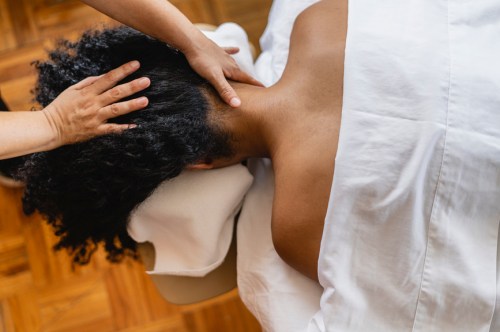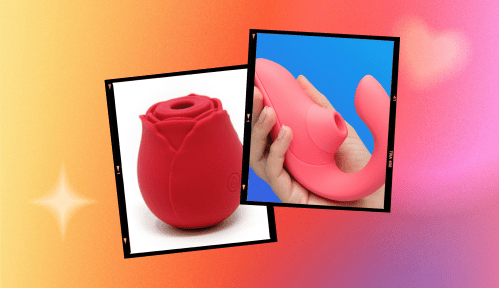It’s no shock to anyone that many of us have too much stress, not enough sleep, and spend a lot of time hunched over our computers and phones. Given this way of life, it’s especially important to take care of our bodies and our minds—and treatments like massage can play a part in that form of self-care. While there are many different types of massages, the super relaxing Swedish massage is the bread and butter of the massage world, and for good reason.
Experts in This Article
“Swedish massage is kind of like your base, go-to massage in the U.S.,” says massage therapist Meghan Kenny, who is the founder of META Bodywork. “It can be used as a warm-up type of massage, or it can just be used as a regular massage if a client is looking for relaxation, blood circulation, and tension relief.”
This kind of massage is typically gentle, relaxing, and targets the whole body (although it can be localized to different body regions upon request). While it doesn’t offer some of the more intense, muscle-relieving perks of a deep tissue massage, a traditional Swedish massage does have both mental and physical benefits.
What is a Swedish massage?
A Swedish massage is a type of massage that uses long, gentle strokes to stimulate circulation and relax the whole body (and mind).
“Swedish massage is known as the most relaxing technique,” says Gara Post, co-founder and chief creative officer of massage boutique The NOW. “The modality emphasizes rubbing the muscles with long strokes in the direction of blood returning to the heart. Kneading, friction, tapping, and gentle shaking motions are commonly utilized as part of this service.”
It typically begins with you lying on your stomach, while your therapist uses those motions to massage your back, neck, arms, and legs. Then, you may turn over so they can massage the ever-tight quads. It’s intended to be a very relaxing experience, and you can communicate to your masseuse how soft or firm you would like the pressure.
Swedish vs. deep tissue massage: What’s the difference?
A Swedish massage is more about holistic relaxation, while a deep tissue massage uses different massage techniques to relieve muscle tightness and pain.
Masseuses will use “different hand techniques based on the goal of pain relief versus relaxation,” says Kenny.
What are the benefits of Swedish massage?
A Swedish massage is a great option if you’re looking to work on your mood, stress, and sleep. Kenny recommends it for helping to activate the parasympathetic nervous system, as well as promoting “improved sleep, improved blood flow, and tension relief.”
It boosts your mood
While “massage” and “mood booster” feel like they should basically be synonyms at this point, it goes without saying that one of the biggest benefits of a Swedish massage is that it really helps to elevate your mood. “Studies show that massage can increase serotonin, dopamine, and oxytocin, which all help to elevate your mood and general well-being,” says Post. It can also help reduce cortisol, the stress hormone, which we could all use less of.
It helps relieve stress and anxiety
Speaking of cortisol, multiple studies have found that Swedish massage is an effective way to help relieve anxiety. One small study tracked the anxiety and vital sign levels of ICU patients before and after a 30-minute Swedish massage, and found that anxiety was reduced and vital signs improved immediately post-massage. Another small study done on women found that Swedish massage therapy helped alleviate stress and anxiety.
It can help you sleep better
Because Swedish massage can help reduce stress and anxiety, it can also help improve your sleep. One study of 57 breast cancer patients found that massage therapy improved their quality of sleep. Better sleep, in turn, reduces stress and anxiety. It’s cyclical, but can go both ways. Poor sleep has been linked to increased anxiety.
Who should get Swedish massage?
Since Swedish massage is typically gentle and relaxing, it can be beneficial for most people.
“If you are an athlete and training all the time, it may be a consistent part of your routine and you may ask to incorporate more techniques to target tight muscles and increase circulation,”says Post. “Everyone working in an office hunched over a computer or sitting in traffic on a daily basis can benefit from the healing elements of Swedish massage, if only to address stress, anxiety, and the pressures of our fast-paced society.”
“Everyone working in an office…can benefit from the healing elements of Swedish massage.” —Gara Post
And don’t be afraid to be upfront about the style and pressure of massage you prefer, or ask about other modalities and what they can do for you, like stomach massage benefits. “You should consult with your massage therapist regarding any injuries or concerns you have, skin sensitivities, or areas that may need more attention,” says Post.
How often should you get a Swedish massage?
Frequency of your Swedish massages is up to you. But Kenny recommends not going longer than a month between sessions if you’re looking to get longer-term stress-relieving benefits.
“Typically we say anywhere from once a week to once a month for an ongoing basis,” Kenny says. “We try not to space out longer than four weeks in between sessions to get the cumulative effects.”
What to avoid after a Swedish massage
A Swedish massage helps reduce stress in part by activating the parasympathetic nervous system. And while this will happen in the massage itself, the longer you can stay in that “rest and digest” state, the greater the benefit to your overall mood will be. For that reason, Kenny recommends avoiding stressful activities—like going in for a hectic day at the office—after you get a Swedish massage.
“To get the most benefit, you would relax as best as you can after the session and hydrate,” Kenny says. “The effects continue to work the rest of the day.”
How can I give myself a Swedish massage?
If you’re interested in booking a Swedish massage, consult with therapists in your area to find the right one for you. But you can also try a self-Swedish massage at home.
“Our hands, neck, and feet often store lots of tension. The most basic Swedish strokes can do wonders to provide extensive relief… Try your skills with a hand and forearm massage and see for yourself,” says Malarie Ortiz, general manager and massage therapist at The NOW Santa Monica.
Intrigued? Check out Well+Good’s tips for DIY full-body massage and face massage.
Learn the five strokes
There are five strokes of Swedish massage. You can try practicing them on yourself for a self-massage. Meghan Kenny explains the differences below.
- 1.Effleurage: “The most flowy stroke, typically just a long, glided stroke that’s used around the body sending blood flow towards the heart.”
- 2.Petrissage: “More of a squeezing, rolling, or kneading of the muscle and so this is starting to break up tension. And what it is also doing is giving the therapist information about the muscle tissue, so if they want to go in there and do more deeper or specific techniques, they know a little bit more about what they’re working on.”
- 3.Friction: “It’s not quite deep tissue, but it gets a little bit deeper into the muscle tissue than some of these other techniques. And it’s kind of a deep circular movement that’s used up and down muscle tissue to increase blood flow.”
- 4.Tapotement (percussion): “A muscle stimulating technique, but it’s not used as long. You wouldn’t use it throughout the whole massage. You would kind of just use it here and there, or to close off the massage.”
- 5.Vibration: “This one is typically used to end a massage and it’s an up and down movement or like a jostling or like a shaking.”
What it’s like to give yourself a Swedish massage
I just spent five minutes massaging my own hands and arms and, while it’s not like a professional, it did help soothe me. While it’s harder to implement these long strokes into a massage on my back, say, I’ve found the principles to be helpful in alleviating soreness in my tight, tight legs and upper extremities. And until I can make it to see a massage therapist IRL, I’ll take it.
Sign Up for Our Daily Newsletter
Get all the latest in wellness, trends, food, fitness, beauty, and more delivered right to your inbox.
Got it, you've been added to our email list.











